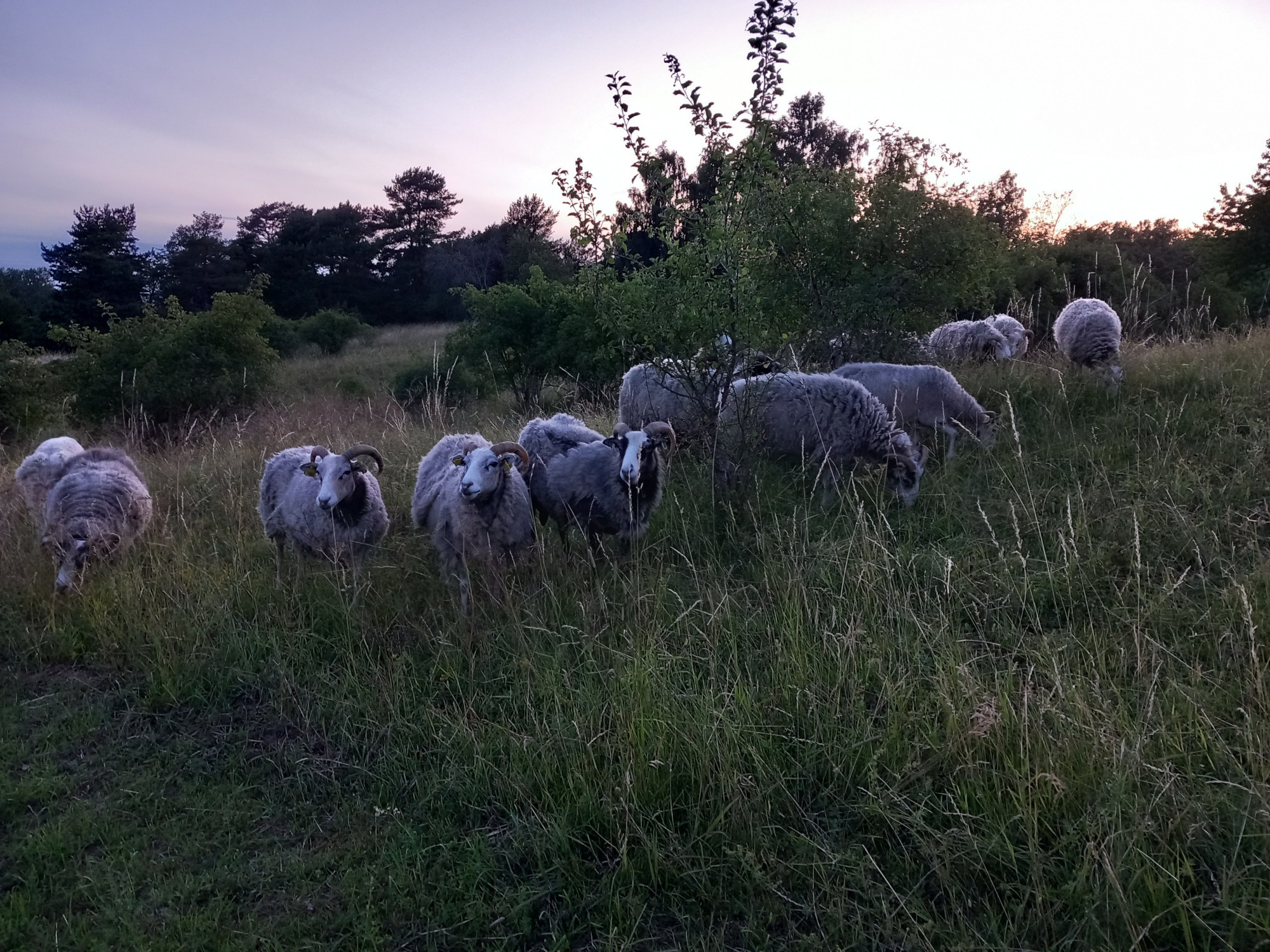
2023-07-29
Seeing as it was quite a while since I last blogged about science, what has been going on since then? I suppose one can make these kinds of lists seem more impressive by just posting them infrequently.
We have ongoing projects about bone quality in laying hens. It’s a big problem; there’s definitely a genetic component; measurement is tricky; watch this space. This year, we published the results of a study on commercial crossbred hens, which I posted about back when it was a preprint.
Johnsson M, Wall H, Lopes Pinto FA, Fleming RH, McCormack HA, Benavides-Reyes C, Dominguez-Gasca N, Sanchez-Rodriguez E, Dunn IC, Rodriguez-Navarro AB, Kindmark A, de Koning D-J. (2023) Genetics of tibia bone properties of crossbred commercial laying hens in different housing systems. G3.
Furthermore, Mohammed Sallam published the first paper of his PhD, about genetic mapping of bone composition in a pure line. Sallam is a PhD student with Dirk-Jan de Koning, and I’m one the co-supervisors.
Sallam M, Wilson PW, Andersson B, Schmutz M, Benavides C, Dominguez-Gasca N, Sanchez-Rodriguez E, Rodriguez-Navarro AB, Dunn IC, de Koning DJ, Johnsson M. (2023) Genetic markers associated with bone composition in Rhode Island Red laying hens. Genetics Selection Evolution.
When I was a postdoc in John Hickey’s group at the Roslin Institute, I took part in the efforts to collect, impute, and analyse whole-genome sequence data in a pig breeding program. The centerpieces of this work, led by Roger Ros-Freixedes, now at Lleida, were published last year:
Ros-Freixedes R, Johnsson M, Whalen A, Chen CY, Valente BD, Herring WO, Gorjanc C, Hickey JM. (2022) Genomic prediction with whole-genome sequence data in intensely selected pig lines. Genetics Selection Evolution.
Ros-Freixedes R, Valente BD, Chen CY, Herring WO, Gorjanc G, Hickey JM, Johnsson M. (2022) Rare and population-specific functional variation across pig lines. Genetics Selection Evolution.
John left the Roslin, but there’s still an ongoing project to use these sequence data for genetic mapping and fine-mapping. This year, we published a genome-wide association study that used sequence data and pCADD scores to nominate candidate variants:
Desire S, Johnsson M, Ros-Freixedes R, Chen C-Y, Holl JW, Herring WO, Gorjanc G, Mellanby RJ, Hickey JM, Jungnickel MK. (2023) A genome-wide association study for loin depth and muscle pH in pigs from intensely selected purebred lines. Genetics Selection Evolution.
We also had reasons to look into the genome of the classic PK15 cell line; a sneak peek was published as a WCGALP conference contribution:
Johnsson M, Hickey JM, Jungnickel MK. (2022) Building in vitro tools for livestock genomics: chromosomal variation within the PK15 cell line. Proceedings of the World Congress on Genetics Applied to Livestock Production.
Our project about features of the genome and diversity in livestock is in full swing. We published some preliminary work as a WCGALP conference contribution:
Johnsson M, Johansson AM, Klingström T, Rius-Vilarrasa E. (2022) The effect of recombination rate on genomic selection in simulation. Proceedings of the World Congress on Genetics Applied to Livestock Production.
I will be talking more about this stuff at EAAP. If you’re interested, maybe see you there?
Colleagues at the department have been looking into the fragile foal syndrome variant, where a recessive allele causes a very serious collagen defect in horses. It’s one of those conspicously common recessive lethals. We got together to analyse data and make some models to see wheter it is subject to balancing selection (it seems like it) and whether one could use a genotyping to select against it (tentatively, yes).
Ablondi M, Johnsson M, Eriksson S, Sabbioni A, Viklund ÅG, Mikko S. (2022) Performance of Swedish Warmblood fragile foal syndrome carriers and breeding prospects. Genetics Selection Evolution.
Finally, I’ve published (preprinted) a couple of rather opinionated papers about genomics in animal breeding. The first presents two different ways to think about the genome, that I think animal geneticists use, that come with two different ways to think about genomics in animal breeding. It was stimulated by a seminar held at the Institute for Advanced Studies in the Humanities in Edinburgh a few years ago, but most of the writing is much newer; sometimes ideas need a couple of years to incubate.
Johnsson M. (2023) Genomics in animal breeding from the perspectives of matrices and molecules. Hereditas.
Also, Hereditas is the journal of the Mendelian Society of Lund, which I believe makes it the only Swedish (-ish; it’s run by Springer Nature as part of the BMC family), so publishing there is a bit of a bucket list item.
The second is a preprint about whole-genome sequence data in genomic prediction, stimulated by an invitation to write something for a special issue about the big issues in livestock genomics.
Johnsson M. (2023) The big challenge for livestock genomics is to make sequence data pay. ArXiv preprint.
